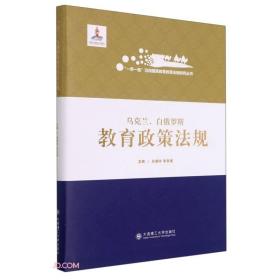
人际关系管理理论视阈下红楼梦委婉语语用研究
¥ 22.93 5.9折 ¥ 39 全新
库存2件
山东泰安
认证卖家担保交易快速发货售后保障
作者刘晓玲 著
出版社知识产权出版社
出版时间2017-08
版次1
装帧平装
货号602 6-29
上书时间2024-06-29
- 在售商品 暂无
- 平均发货时间 25小时
- 好评率 暂无
- 最新上架
商品详情
- 品相描述:全新
图书标准信息
- 作者 刘晓玲 著
- 出版社 知识产权出版社
- 出版时间 2017-08
- 版次 1
- ISBN 9787513016506
- 定价 39.00元
- 装帧 平装
- 开本 其他
- 页数 202页
- 字数 180千字
- 【内容简介】
- 委婉语是一种间接性语言,同时也是一种社会和文化现象,是有效协调人际关系的润滑剂,也是保全交际双方面子的重要手段。因此,委婉语与面子和礼貌有着密不可分的关系。《红楼梦》是一部文学巨著,它展现了一幅高度礼教化和等级森严的封建社会的画卷,也道出了中国传统的‘和合’二字在人际关系中的重要作用。其错综复杂的社会、家庭关系以及对众多角色的驾驭为小说语言艺术的分析提供了丰富的历史文化背景和语言材料。对于《红楼梦》语言艺术的大量研究多见于其修辞特色,也有不少学者从翻译学的角度对《红楼梦》原作中与译作中的委婉语进行对比研究。近几年,也有人尝试运用语用学的理论对作品中的委婉语进行分析和探讨。但是,迄今还没有人从语用学的角度对于《红楼梦》人物话语中的委婉语进行较为系统的研究。Spencer-Oatey的人际关系管理理论是以面子和礼貌为基础,以面子和权利为核心内容构建起来的人际关系管理框架。保全面子的工作在中国是典型的防止冲突的机制,而关系管理理论的基础和核心内容恰好与中国人重视人际关系、注重面子的传统观念不谋而合。因此,本论文以Spencer-Oatey的人际关系管理理论为框架,从语用学的角度对于《红楼梦》人物话语中的委婉语进行探讨和研究。基于小说中复杂而严格的社会与家庭的等级观念和权势关系,本研究以权势作为变量,综合其它影响性因素如关系取向、讯息内容、参与者之间的关系、交际活动以及关系管理的结果等,对于人物话语中的委婉语展开分析。
- 【作者简介】
- 刘晓玲,上海外国语大学博士,北京联合大学公共外语教学部教授。主要研究方向为语用学、社会语言学、跨文化交际、外语教师发展以及外语教学。完成省部级课题3项,获省部级很好成果奖2项。发表学术论文20余篇,编写教材9部。
- 【目录】
-
Acknowledgements
摘要
Abstract
List of Tables
List of Figures
List of Abbreviations
Chapter One Introduction
1.1 Background of the Study
1.2 Objectives
1.3 Questions for the Study
1.4 Significance of the Study
1.5 Methodology
1.6 Collection of Euphemisms
1.7 Organization of the Book
Chapter Two Literature Review
2.1 Introduction
2.2 Fundamentals Revisited
2.2.1 Indirectness, Grice\\\'s CP & CI and Leech\\\'s PP
2.2.2 Face, Facework, Brown & Levinson\\\'s Face Theory and Gu\\\'s PP
2.3 Euphemism
2.3.1 Definitions
2.3.2 Origin of Euphemism
2.4 Studies of Euphemism in Retrospect
2.4.1 Studies of Euphemism Abroad
2.4.2 Studies of Euphemism at Home
2.5 Studies of Euphemisms in DRM
2.6 Summary
Chapter Three Theoretical Framework:Rapport Management
3.1 Introduction
3.2 Components of Rapport Management
3.2.1 Quality Face and Identity Face
3.2.2 Equity Rights and Association Rights
3.3 Rapport-Threatening Behavior: Managing Face and Soity Rights
3.4 Rapport-Management Strategy Domains
3.5 Factors Influencing Strategy Use
3.5.1 Rapport Orientation
3.5.2 Contextual Variables
3.5.3 Pragmatic Conventions
3.6 Rapport Management Outcomes
3.7 Summary
Chapter Four Description and Categorization of Euphemisms in DRM
4.1 Introduction
4.2 Conventional Euphemisms
4.2.1 Devil and Disaster
4.2.2 Death and Funeral Affairs
4.2.3 Disease and IU Health
4.2.4 Sex
4.2.5 Excreta and Secretion
4.2.6 Pregnancy and Birth
4.2.7 Ageing
4.2.8 Love and Affection
4.2.9 Marriage and Concubinage
4.2.10 Women\\\'s Jealousy in Love
4.2.11 Address Terms for Interpersonal Relations
4.2.12 Servants and Housemaids
4.2.13 Personal Names Regarded as Taboos
4.2.14 Moral Standing and Disposition
4.2.15 Buddhist Practice and Buddhist Practitioner
4.3 Situational Euphemisms
4.3.1 Euphemisms with Semantic Fuzziness
4.3.2 Euphemisms with Syntactical Devices
4.4 Summary
Chapter Five Demonstration Analysis of Euphemisms in DRM
5.1 Introduction
5.2 Power
5.3 So Power Relations
5.3.1 The Absolute Royal Power
5.3.2 So Unequals
5.4 Familial Power Relations
5.4.1 Unequal Kinship
5.4.2 Master-Servant Relations
5.5 Summary
Chapter Six Discussions
6.1 Introduction
6.2 Rapport Management and Euphemisms in DRM
6.2.1 Quality Face and Euphemisms
6.2.2 Identity Face and Euphemisms
6.2.3 Equity Rights and Euphemisms
6.2.4 Association Rights and Euphemisms
6.3 A Comparative and Contrastive Analysis of Related Theories and Principles
6.3.1 Grice\\\'s CP & CI and Spencer-Oatey\\\'s Rapport
6.3.2 Leech\\\'s PP and Spencer-Oatey\\\'s Rapport
6.3.3 Brown & Levinson\\\'s Face Theory and Spencer-Oatey\\\'s Rapport
6.3.4 Gu Yueguo\\\'s PP and Spencer-Oatey\\\'s Rapport
6.4 Non-use of Euphemisms
6.5 Li and Politeness
6.6 Summary
Chapter Seven Condusion
7.1 Introduction
7.2 Findings
7.3 Implications
7.4 Limitations and Suggestions
Bibliography
点击展开
点击收起
相关推荐
— 没有更多了 —
















以下为对购买帮助不大的评价